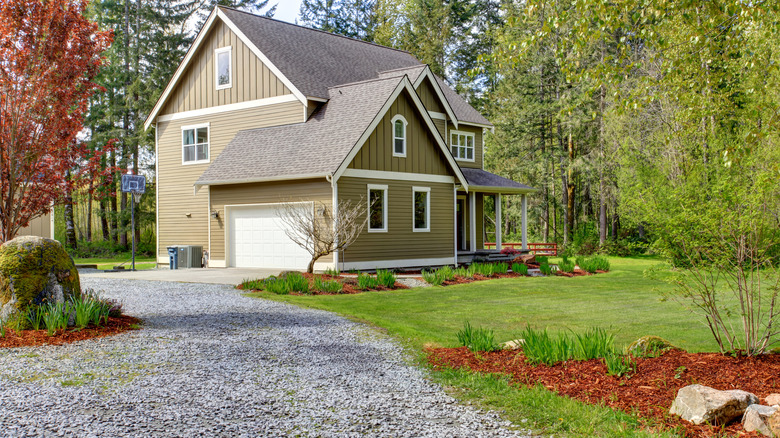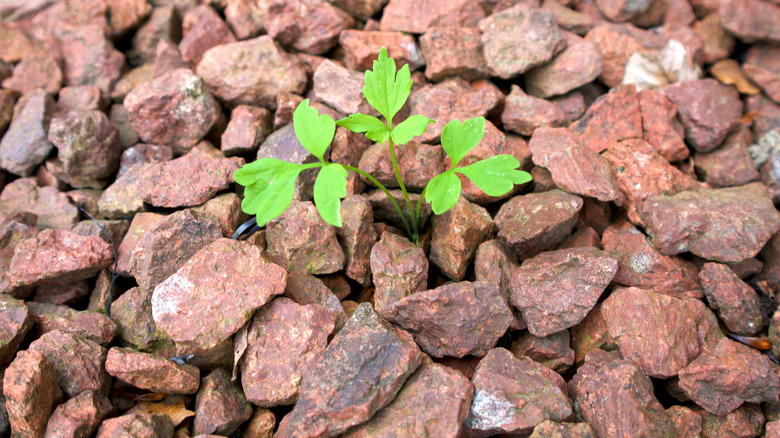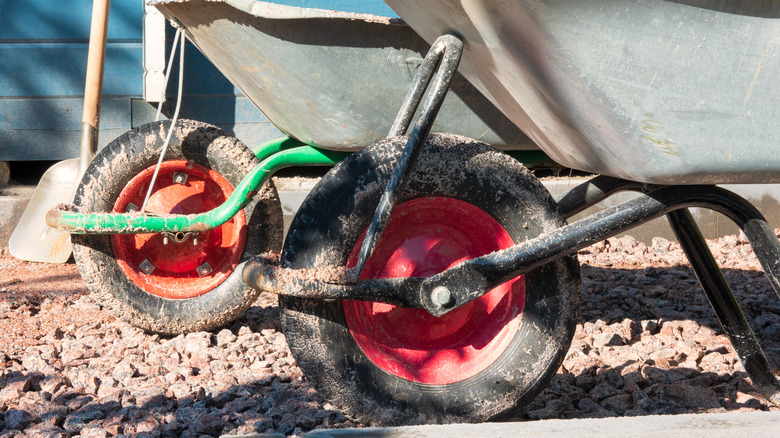Gravel Driveways Are Cost-Effective But You Need To Know About Their Drawbacks Too
Gravel offers an inexpensive option for paving a driveway since the price tag comes in at only $1 to $3 per square foot, depending on the size of the paved area, the land preparation, and the material of choice. The depth of the driveway will also affect the cost because the deeper you have to dig, the more material will be required to fill the space. So, you're looking at paying $30 to $100 per ton of gravel while keeping in mind that you'll need several tons. More specifically, you have pea gravel on the low end, and the higher-end materials include quartz and blue stone.
Regardless, gravel still ranks as one of the cheapest driveway materials. However, you have some disadvantages to consider since gravel driveways come with their own set of issues in relation to maintenance and stability. Exploring the drawbacks could help with any decision-making if you're still unsure of the best material to choose.
Challenging maintenance
One drawback to gravel driveways is their upkeep. This type of driveway proves to be high-maintenance, especially if you don't install a border around it to keep the gravel in place. With constant traffic, the gravel tends to roll out of place and spread over time. So then, you have the problem of worn paving and rocks in your yard.
Another issue that you'll have to deal with relates to weeds. If you don't remove them right away, their growth will spoil both the driveway's structural integrity and its visual appeal. Likewise, removing leaves and other debris presents a challenge since you can't simply sweep away anything that falls on the paving. Hence cleaning the surface is difficult and time-consuming because using a leaf blower or a garden vacuum is virtually impossible. The blower could move smaller rocks away from the driveway, and the vacuum would get damaged. Likewise, hosing down the surface or using a power washer could likely shift the rocks as well.
Unstable surface
Another disadvantage to gravel driveways is their lack of stability. While the rocks are densely packed into the rut, numerous factors will cause them to shift over time. For one thing, you'll move a lot of the material around if you have to shovel snow off your driveway. Furthermore, a nominal amount of precipitation will wash away the smaller pieces, contributing to the formation of holes and ruts on the surface. Hence, you must ensure the installation includes top dressing, a side railing, and a porous layer underneath the pebbles. And even then, you still need to resurface it periodically, depending on the weather patterns in your region.
Plus, you might face problems with constant traffic wearing down the surface. The weight of large, heavy vehicles also causes the shifting to the point where ruts and holes might form. Furthermore, smaller, more narrow tires, like those found on bikes, skates, and mobility aids, would not move easily over the rough, unstable surface. With this in mind, you might also have difficulty with navigating a dolly or a wheelbarrow over gravel, thus making this paving more of an obstacle than a driveway in some cases.


